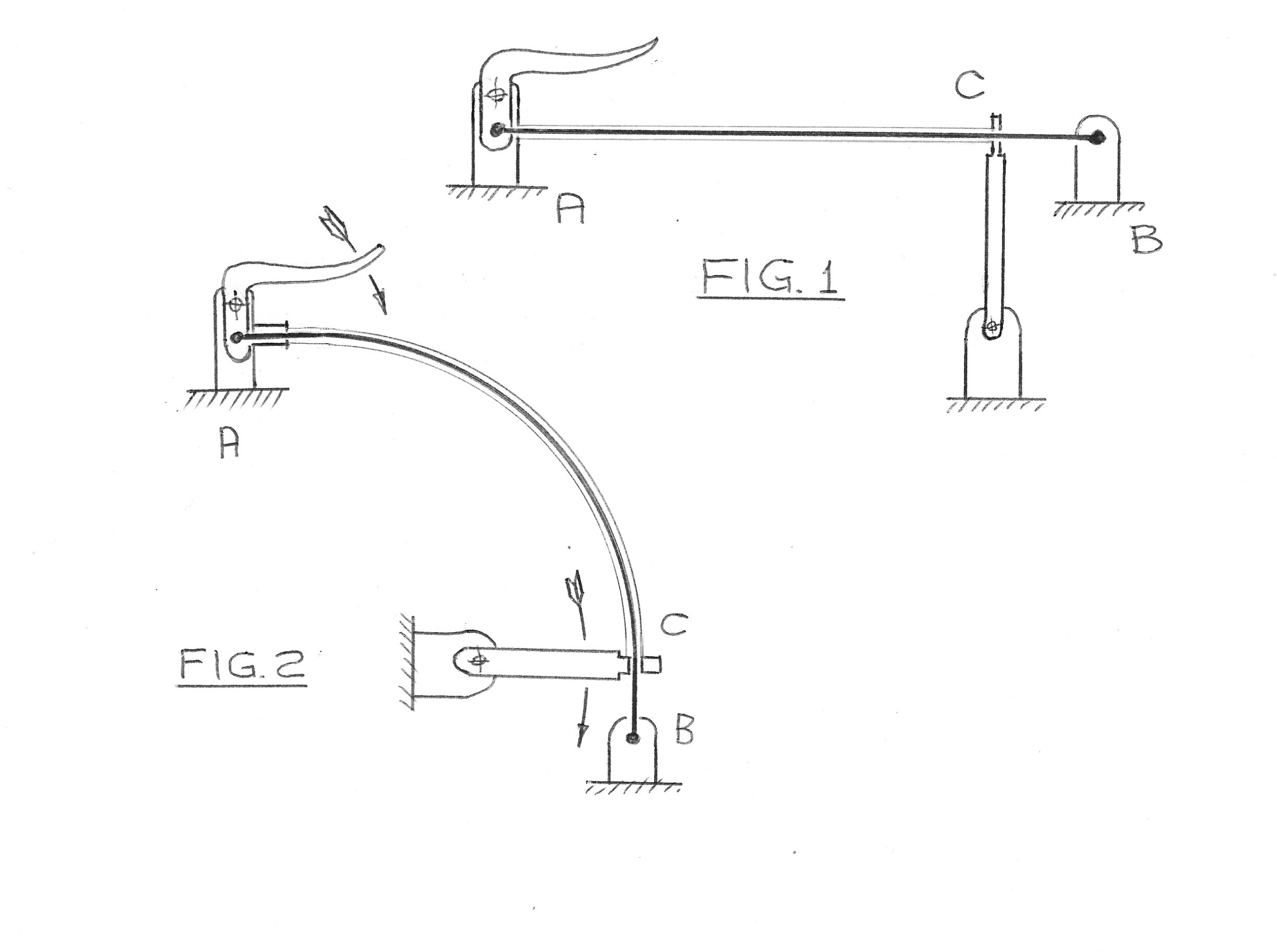Certain features of the Sopwith motorcycle's design are of notable engineering elegance...the rear suspension leaves, firmly clamped at both ends, is one such. Another is the (external) operation of the clutch, which (as per original spec.) relied upon motion of its outer cable relative to the inner cable (which remained "stationary").
History indicates that a significant proportion of Sopwith owners have mistrusted (or simply misunderstood) this system, and have needlessly adopted alternative measures.
Diagrammatic Figs (1) and (2) below, explain what is going on.
(1) With a straight inner cable between A and B, clearly, no amount of effort applied to the inner cable at A will move C.
(2) With a curved cable arrgt. between A and B, tension applied to the inner cable at A will cause it straighten a little, thus shortening its route to B, in particular between A and C: the outer cable (which cannot shorten its route) has to push C closer to B.
The only caveat of this system is that the cable-run must never pull tight in its route from handlebar-lever to the lower-end anchorage
